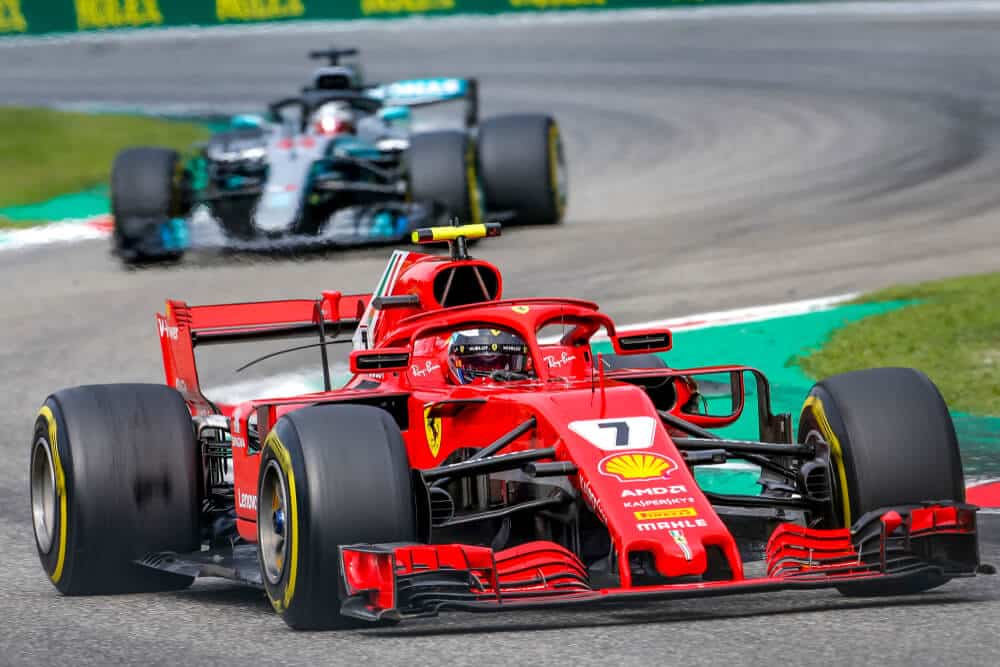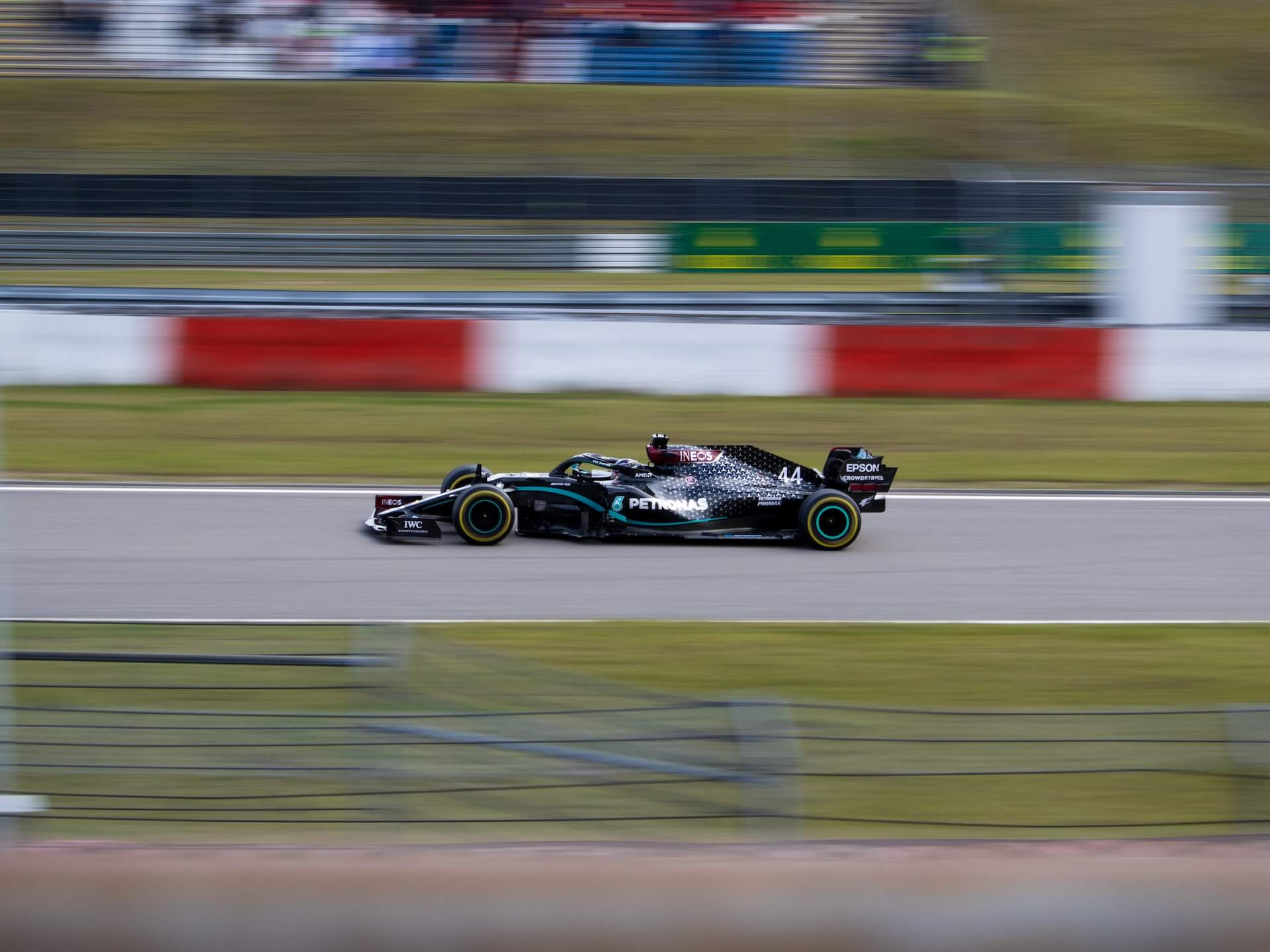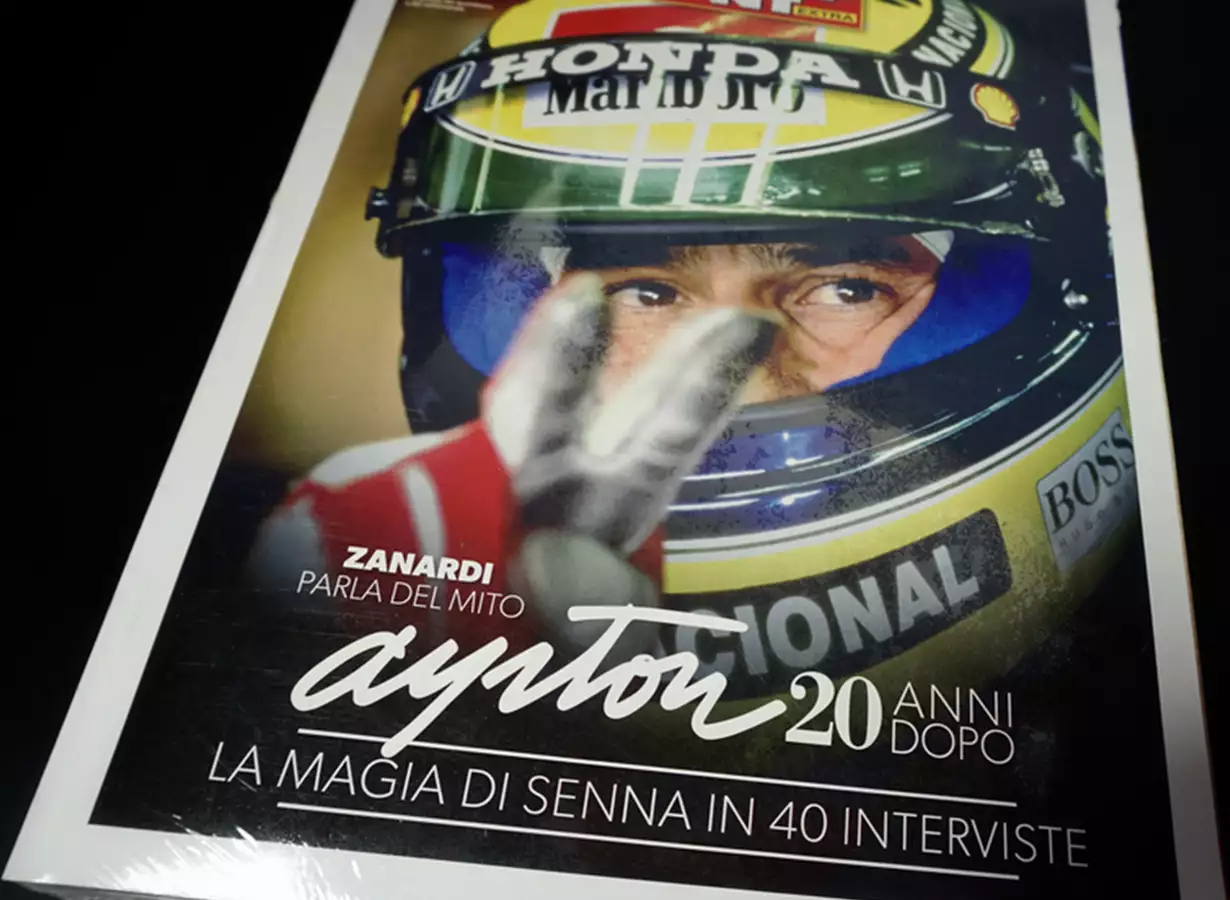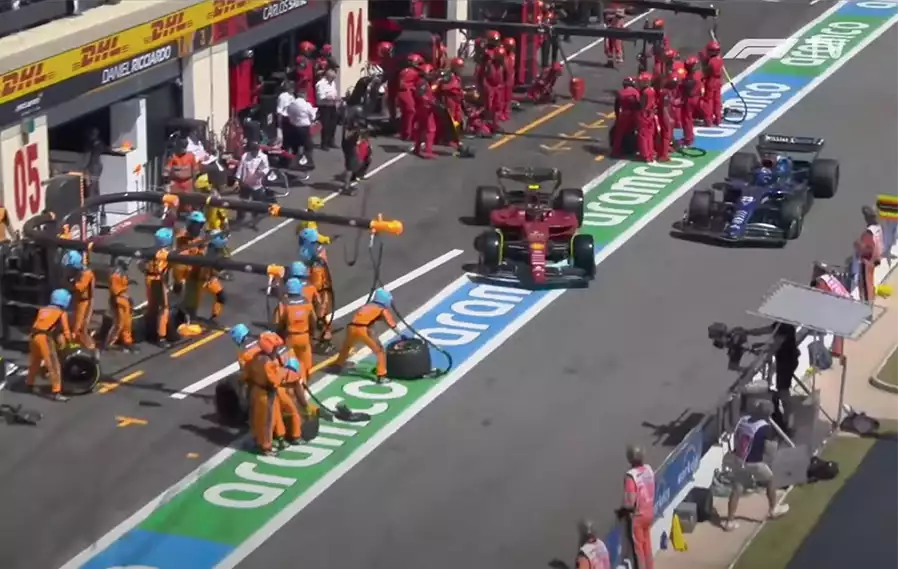The concept of a “Winged Car” revolutionised the sport of F1 by introducing an extra dimension to vehicle design and race strategy. By creating downforce, these cars increase tire grip which allows for faster cornering speeds. Although this innovation has added complexity to the world of motor-racing, it’s also sparked concerns over safety. As well as admiration for what the technology can achieve. Understanding the implications of winged cars in F1 is essential to fully appreciating the modern world of motor-sport.
This article will explore what is meant by a “Winged Car” in Formula One racing. Including looking at how downforce works and the advantages it can bring. It will also address some of the potential drawbacks and safety concerns associated with this technology.
Table of Contents
Watch this video to learn more about aerodynamics around the wings of an F1 car.
What is a Winged Car?
In Formula One, a “winged car” is one that has been specially designed with aerodynamic wings on the front and back of the vehicle. These wings create a downward force, known as downforce. Downforce works by changing the air flow around the car.
By doing so, it increases tire grip and enables the vehicle to navigate corners at higher speeds without losing stability. In essence, these aerodynamic wings help to make Formula One cars faster and more agile on racetracks. Additionally, winged cars are more fuel-efficient due to the decreased drag that comes with their design.
Different types of wings used in F1
Formula One cars employ several types of aerodynamic structures, including front wings, rear wings, and sidepods, each serving distinct functions.
Front wings: Front wings are the first area of a car to encounter air head-on. They act as guides for airflow around the tires, reducing drag and directing it over the body of the vehicle towards the rear wing. At the same time, they also create downforce which presses the front tires onto the track thus improving grip. The designs of front wings have become increasingly sophisticated over the years. Now a days they feature intricate elements and flaps to precisely manipulate the passing airflow.
Rear wings: Rear wings are one of the most crucial elements in Formula One. They are made up of endplates, flap, gurney flap, and DRS. They are designed to balance the grip between the front and rear of the car, as well as reduce drag by controlling turbulent air behind the vehicle. The Drag Reduction System (DRS), an advanced feature of modern F1 rear wings, is capable of adjusting its angle on straights to minimize drag, thereby encouraging overtaking.
Sidepods: Sidepods, while not actual wings in the conventional sense, are an integral component of aerodynamics. These curved shells wrap around the car’s midsection and direct air towards the back, influencing both downforce and drag. In the end, it is the perfect combination of sidepod design that creates a “winged car” for optimal performance on the racing track.
Key Takeaways
Here are some key aspects that you should know regarding winged cars in F1:
- Winged Cars” in Formula One feature aerodynamic wings to manipulate air flow and increase performance.
- These wings generate downforce, enhancing tire grip and allowing faster cornering speeds.
- Front wings guide airflow around the tires and direct it towards the rear wing.
- Rear wings balance grip, manage turbulent air, and reduce drag for efficient performance.
- Sidepods, while not wings, contribute significantly to a car’s overall aerodynamics.
- The design of these aerodynamic features is a complex balance between speed, grip, and cooling efficiency.
- A key feature of modern F1 rear wings is the Drag Reduction System (DRS), promoting overtaking.
The Evolution of the Winged Car
As Formula One teams strive for maximum speed and stability, wings have become an increasingly crucial part of their vehicles. Over time, engineers have been able to refine and optimize the design of these aerodynamic components in accordance with the continually changing regulations. The result is a “Winged Car” with optimal performance at high speeds, which has become an indispensable element in the hyper-competitive world of modern Formula One racing.
Let’s take a look at the timeline of the “Winged Car”‘s evolution.
The concept of ‘winged cars’ in Formula One dates back to the mid-1960s when teams experimented with aerodynamic devices on their cars. This introduction led to multiple failures and accidents, leading to a brief ban of wings in 1969.
Soon thereafter, they were reintroduced but this time with stricter regulations that mandated them to be part of the car body. The early 1980s saw the rise of ‘ground effect’ aerodynamics, which revolutionized Formula One cars. This involved the cars having extended side skirts and a venturi-shaped underbody, resulting in so-called ‘winged cars’ that had greater downforce for increased grip on the race track.
However, the high levels of downforce exerted by these designs also meant that the cars had less drag and were significantly faster. The sport’s governing body, the FIA, soon realised this and quickly set about introducing regulations to restrict extreme aerodynamic designs. This period led to an era where teams designed their cars with a careful consideration for both power and aerodynamics.
In 2011, in an effort to promote overtaking, the Drag Reduction System (DRS) was introduced. This system allows drivers to adjust the angle of their rear wings on certain parts of the track, allowing them to reduce drag and increase speed.
Teams have continued to develop the technology since then, resulting in highly sophisticated aerodynamic profiles that are designed to minimize drag and maximize straight-line speed.
How the use of wind tunnels and computer simulation has allowed teams to fine-tune their “Winged Cars”
The use of wind tunnels and computer simulations, including Computational Fluid Dynamics (CFD), has revolutionized the way teams design and fine-tune their “Winged Cars” in Formula One.
Wind tunnels: Wind tunnels provide an invaluable resource for Formula One teams, allowing them to test designs and optimize the aerodynamic performance of their cars. By blowing air over scale models or actual vehicles, they can observe and measure its effects on air flow.
With smoke or colored dye, the teams visually track and analyse the path of air around their car, with particular attention paid to the shape and angle of the wings. This helps them to refine their designs and gain an edge over their competitors on race day. Wind tunnels are a key part of Formula One’s technological advancement, giving teams the opportunity to explore the potential of their cars’ design features.
CFD: Computer simulation known as Computational Fluid Dynamics (CFD) is a key part of the Formula One engineering process. It models the air flow around a car using complicated equations to allow teams to virtually evaluate how alterations in the vehicle’s shape or wing design will affect performance. All this without needing to physically construct models.
CFD also gives way for engineers to analyze the pressure and velocity of air around every point on the car. It allows for a detailed analysis of how to “best wing the car”. With this technology, teams can gain insight into creating cars with superior aerodynamics and better understand how air flow affects performance on the track.
Advantages and Disadvantages of a Winged Car
Let’s take a look at some advantages and disadvantages of having a winged car on the Formula One circuit.
Advantages of a winged car
Here are some advantages of winged car in Formula 1:
- Enhanced Downforce: Wings increase the downforce on a car, pressing the tires harder onto the track, which improves grip and allows faster cornering speeds.
- Improved Balance and Stability: The distribution of downforce between front and rear wings helps to balance the car, making it more stable and easier to control.
- Greater Speeds: By minimizing air resistance or drag, winged cars can achieve greater straight-line speeds, leading to faster lap times.
- Overtaking Opportunities: With the Drag Reduction System (DRS) on the rear wing, drivers can momentarily reduce drag to increase speed and attempt overtaking maneuvers.
- Fuel Efficiency: By optimizing aerodynamics, winged cars can be more fuel efficient, allowing for strategic advantages in races.
Disadvantage of a winged car
With all of the advantages of a winged car, there are some potential downsides to consider as well.
- Complex Design and Cost: The design and testing of aerodynamic wings are complex and expensive processes, requiring significant investment in resources and technology.
- 2. Risk of Damage: Wings are susceptible to damage during races, which can drastically affect a car’s performance. Even minor collisions can have significant impacts.
- Maintenance: The wings on Formula One cars require regular maintenance and repair in order to remain effective, which could be costly for teams.
- Regulation Constraints: F1’s governing body, FIA, imposes strict regulations on wing design. Any changes or innovations must comply with these rules, limiting design freedom.
- Safety Concerns: In the past, failures of wing structures led to serious accidents. Even today, issues related to high-speed aerodynamics can pose safety risks.

The future of winged cars in F1
So, how does the future of winged cars in Formula One look? Let’s take a closer look.
Regulations of winged cars
The FIA regulates the design and usage of wings on cars through its technical regulations. The rules specify dimensions, locations, and materials for the wings, aiming to ensure fair competition, enhance driver safety, and limit escalating costs.
Notably, the FIA introduced a major overhaul of the aerodynamic rules in 2022. With the aim at reducing turbulent air behind cars to promote closer racing and overtaking. With such changes, the FIA continues to shape the future of winged cars in F1.
Current trends of winged cars
Current trends in Formula One racing are focused on optimizing the strength, weight, and flexibility of winged cars. Advanced simulation tools, artificial intelligence (AI), and machine learning are increasingly being used in aerodynamic design, allowing teams to discover more possibilities and perfect wing performance. Although currently limited by regulations, active aerodynamics will potentially become a future game-changer, allowing teams to adjust wings on the go in order to maximize speed and efficiency. As Formula One continues to evolve and develop, it’s likely that the designs of winged cars will continue to improve as well.
In addition to technological advancements, safety is a key concern for Formula One teams when designing their winged cars. Teams have been working to ensure that their wings are not only aerodynamically efficient, but also structurally sound and able to withstand high impact in the event of a crash.
Notable Winged Cars in Formula One
Let’s take a look at some of the notable winged cars in Formula One and the impact they had on the sport.
Lotus 79
The iconic Lotus 79, which debuted in 1978, revolutionized the Formula One racing scene with its pioneering use of aerodynamics. Its unique design utilized air flow underneath the car to create a suction effect that generated an impressive amount of downforce. This innovation made it one of the first F1 cars to fully take advantage of ground effects.
The car dominated the 1978 season, with Andretti winning the Driver’s Championship and Lotus claiming the Constructor’s title.
Brabham BT46B
Known as the “Fan Car,” the Brabham BT46B is one of the most famous examples of aerodynamic innovation in F1. Introduced in 1978 by designer Gordon Murray, the car featured a large fan at the rear, designed to extract air from beneath the vehicle, enhancing the ground effect.
It famously won its only race at the Swedish Grand Prix but was subsequently banned due to protests from other teams. Despite its short-lived career, the BT46B’s novel approach to downforce remains a standout moment in F1 history.
McLaren MP4/4
The McLaren MP4/4, driven by Ayrton Senna and Alain Prost in 1988, is one of the most successful F1 cars of all time. Its low-slung design, including a meticulously engineered wing package, contributed to an astonishing winning streak, with the team taking victory in 15 out of 16 races that season.
The MP4/4 set a benchmark for aerodynamic efficiency and integration of engine and chassis design, shaping the future of F1 car design.
The impact these cars had on Formula One
Each of these cars represents a significant step in the evolution of “Winged Cars” in Formula One. They showcased the potential of aerodynamics to revolutionize performance and demonstrated the impact of innovative thinking in F1 design.
Their successes highlighted the importance of continuous evolution in the sport, often pushing the boundaries of the regulations in the process. They have not only made a mark in the history books but have also set a standard and direction for future advancements in F1 car design and performance.
Frequently Asked Questions
How do the wings on a "Winged Car" work to improve performance?
Are there any downsides to using a "Winged Car" design in Formula One?
How have regulations in Formula One racing impacted the use of "Winged Cars" over time?
Conclusion
So, there you have it: “Winged Car” is a term used in Formula One racing to describe a car that has been designed with wings to create more downforce. It allows the car to go faster around corners. The use and design of these cars have been impacted by regulations over time. It has resulted in major shifts in wing design.
The purpose of wings in F1 racing is to provide downforce so that the car has better grip and higher speeds when cornering. This allows drivers to go faster around corners while also keeping them safe at high speeds. The FIA has regulated the design and use of wings to ensure that teams are not using them excessively or in ways that could be potentially dangerous. As a result, teams have had to constantly adjust their wing designs in order to gain an advantage over their competitors.
Article sources
Learn more about Formula One
Want to learn more about F1? Then visit our Formula 1 glossary and dictionary.



